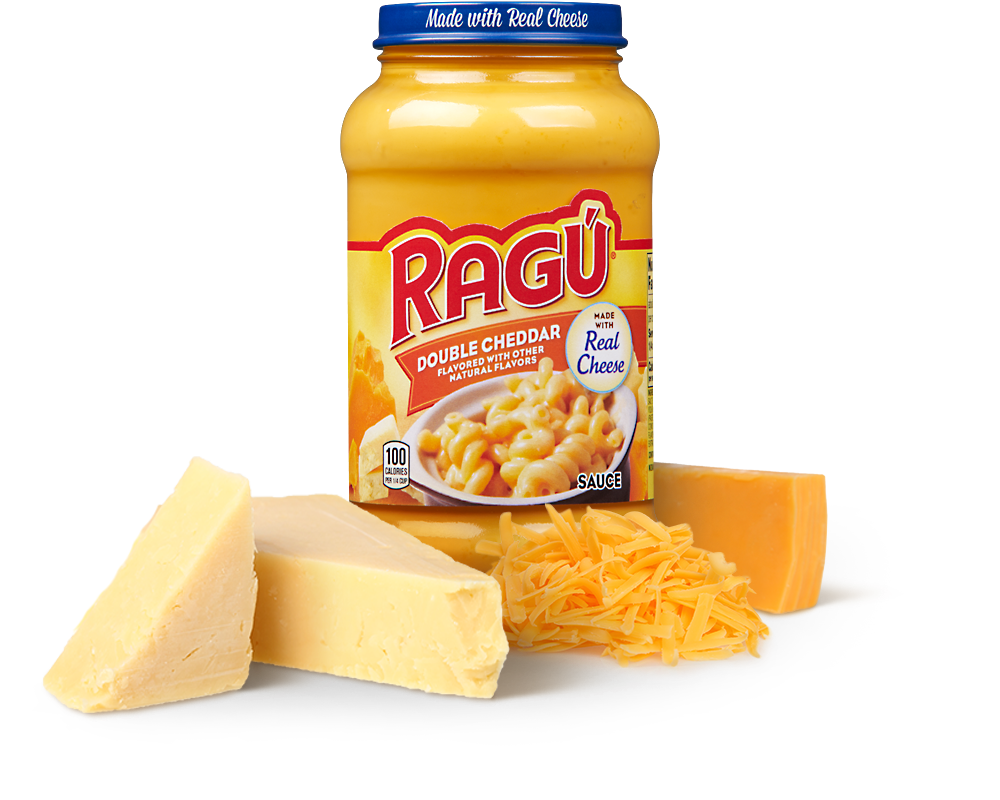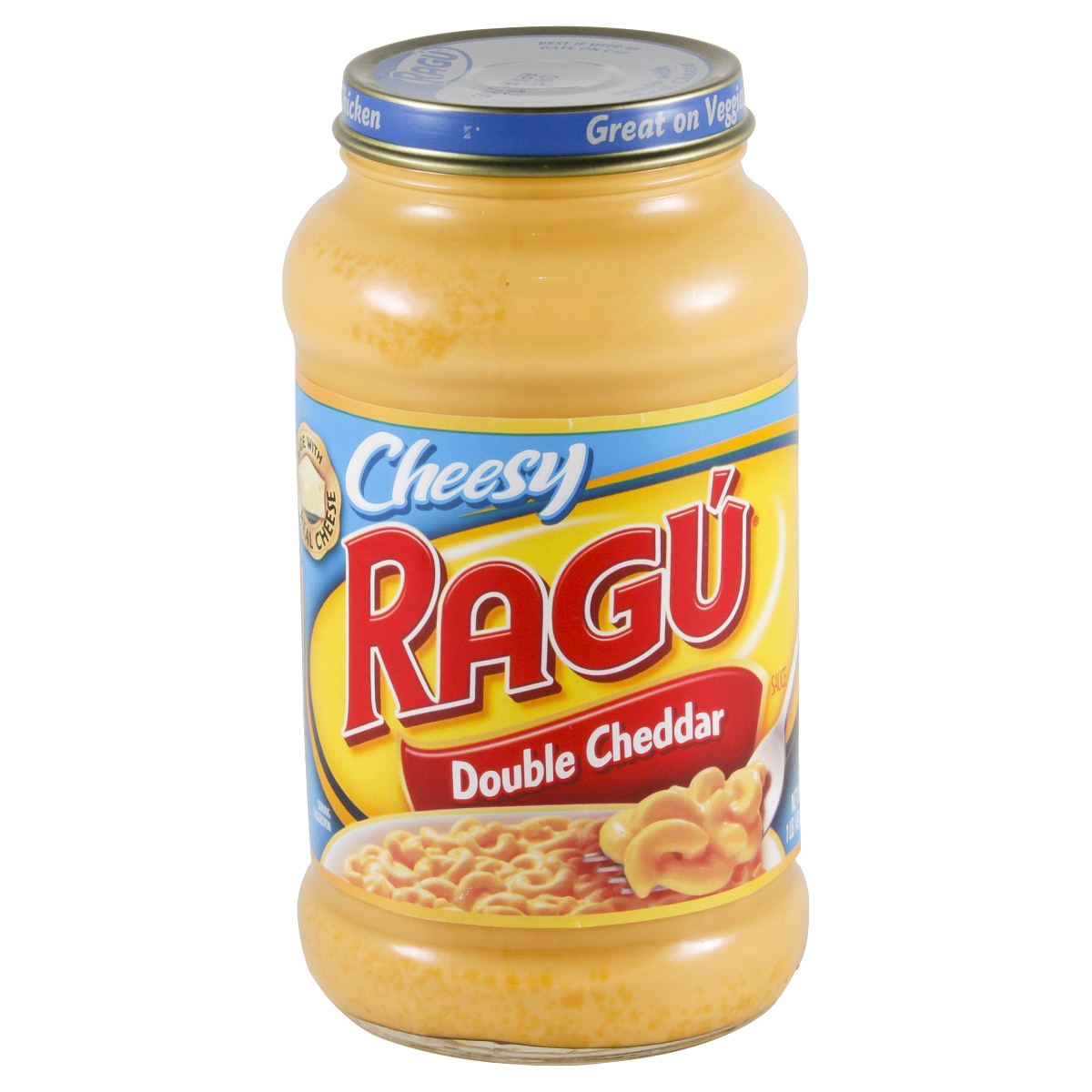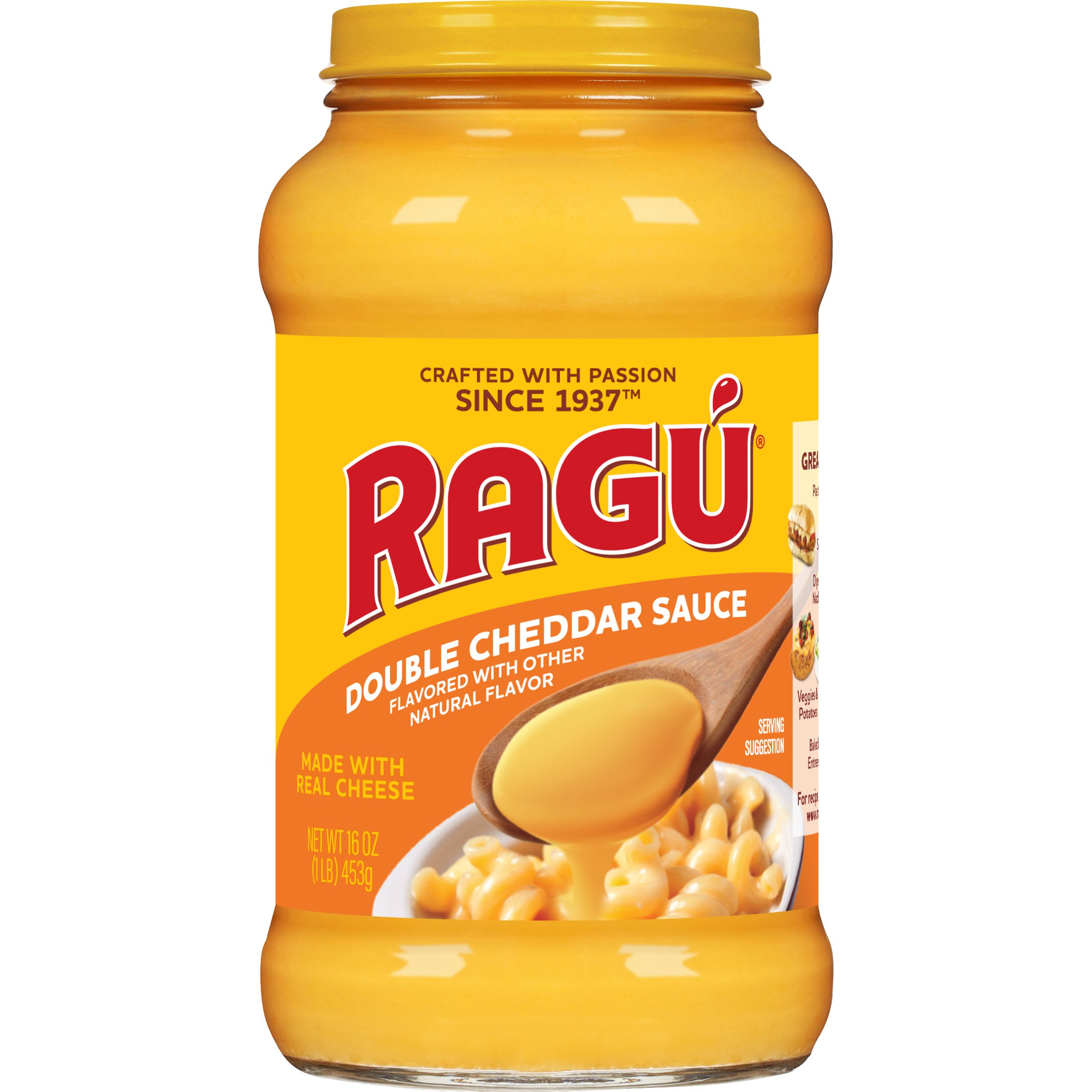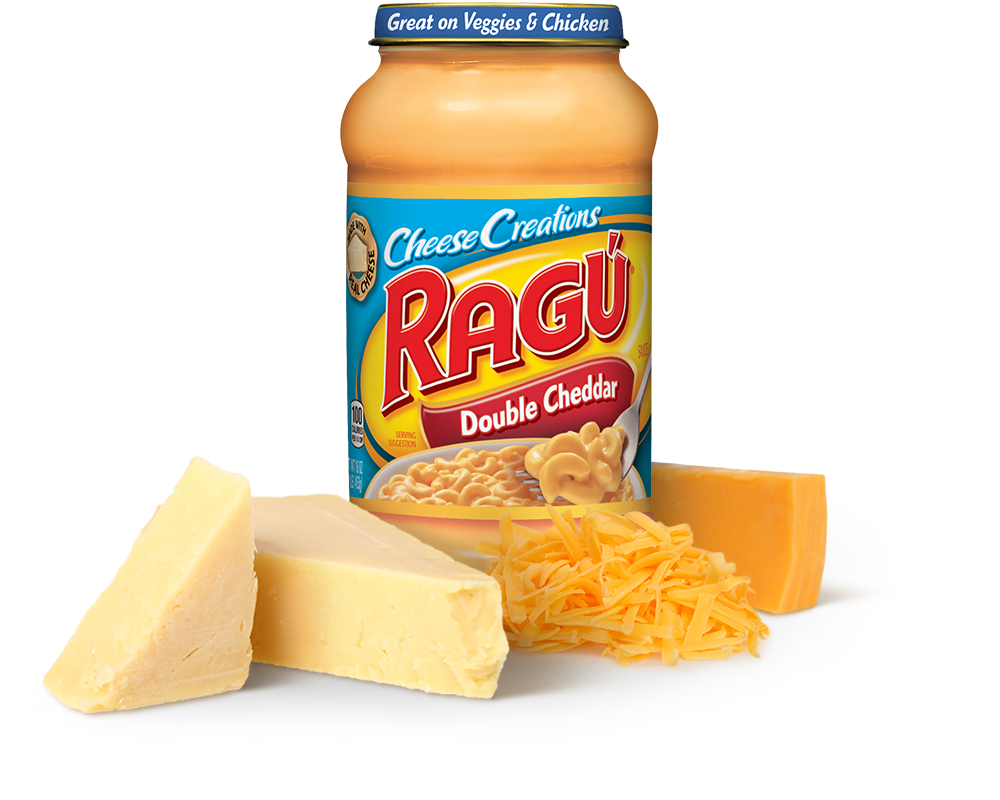Get ready to tantalize your taste buds with our exploration of ragu double cheddar cheese sauce recipes. These culinary masterpieces have captivated food enthusiasts worldwide, promising an explosion of flavors that will leave you craving for more.
From its humble origins to its widespread popularity, we’ll delve into the fascinating world of ragu double cheddar cheese sauce, uncovering the secrets behind its irresistible charm.
Introduction to Ragu Double Cheddar Cheese Sauce Recipes
/easy-cheddar-cheese-sauce-3052635-12-5b0da85930371300370ec717.jpg)
Ragu double cheddar cheese sauce recipes have a rich history dating back to the early 1900s, originating in the kitchens of Italian-American families. These recipes gained popularity due to their versatility and ability to enhance the flavors of various dishes, from pasta and lasagna to nachos and casseroles.
Popularity and Widespread Use
Ragu double cheddar cheese sauce recipes have become a staple in American cuisine, enjoyed by people of all ages. The popularity of these recipes can be attributed to their convenience, affordability, and the ability to create a creamy, cheesy sauce with minimal effort.
Interesting Facts and Anecdotes
One interesting fact about ragu double cheddar cheese sauce is that it was originally created as a way to use up leftover cheese. Today, it is a beloved ingredient in many dishes and is often the preferred choice for cheese sauces.
Ingredients and Variations

Ragu double cheddar cheese sauce is a versatile and flavorful sauce that can be used in a variety of dishes. The key ingredients in this sauce are:
- Ragu: Ragu is a type of Italian meat sauce that is made with ground beef, pork, or veal. It is simmered in a tomato sauce with vegetables and spices.
- Cheddar cheese: Cheddar cheese is a hard, yellow cheese that has a sharp, nutty flavor. It is a good melting cheese, which makes it ideal for use in sauces.
- Milk: Milk is used to thin out the sauce and make it creamy.
- Butter: Butter is used to add richness and flavor to the sauce.
- Flour: Flour is used to thicken the sauce.
- Salt and pepper: Salt and pepper are used to season the sauce.
There are many variations on the basic ragu double cheddar cheese sauce recipe. Some common variations include:
- Adding other cheeses: You can add other cheeses to the sauce, such as mozzarella, Parmesan, or Gruyère.
- Using different meats: You can use different meats in the ragu, such as ground turkey, chicken, or sausage.
- Adding vegetables: You can add vegetables to the ragu, such as onions, peppers, or mushrooms.
- Using different spices: You can use different spices in the ragu, such as oregano, basil, or thyme.
You can also make gluten-free, dairy-free, and vegan versions of ragu double cheddar cheese sauce. To make a gluten-free version, use gluten-free flour. To make a dairy-free version, use dairy-free milk and cheese. To make a vegan version, use plant-based milk, cheese, and butter.
Step-by-Step Cooking s

Creating a flavorful and velvety ragu double cheddar cheese sauce is a straightforward process that can elevate any pasta dish. Follow these detailed s to achieve a perfect sauce every time:
Gather Ingredients
- Ground beef
- Onion
- Garlic
- Canned tomatoes
- Tomato paste
- Beef broth
- Dried oregano
- Dried basil
- Double cheddar cheese
- Heavy cream
- Salt and pepper
Prepare the Ragu
- In a large skillet, brown the ground beef over medium heat. Drain any excess fat.
- Add the onion and garlic to the skillet and cook until softened.
- Stir in the canned tomatoes, tomato paste, beef broth, oregano, and basil. Bring to a simmer and cook for 15-20 minutes, or until the sauce has thickened.
Create the Cheese Sauce
- In a separate saucepan, melt the double cheddar cheese with the heavy cream over low heat, stirring constantly.
- Season with salt and pepper to taste.
Combine the Ragu and Cheese Sauce
Once both the ragu and cheese sauce are ready, combine them in a large bowl. Stir well to blend the flavors.
Serve and Enjoy
Serve the ragu double cheddar cheese sauce over your favorite pasta and garnish with additional shredded cheddar cheese if desired.
Serving Suggestions and Pairing Options

Ragu double cheddar cheese sauce is a versatile condiment that can elevate the flavors of various dishes. Whether you’re looking to smother your pasta, enrich your meats, or add a cheesy kick to your veggies, this sauce has got you covered.
When pairing the sauce with pasta, consider its creamy and rich texture. It pairs exceptionally well with short, sturdy pasta shapes like penne, shells, or rigatoni. These shapes can hold onto the sauce, allowing you to savor every cheesy bite.
Meats
Ragu double cheddar cheese sauce is an excellent companion for grilled or roasted meats. Its tangy and cheesy flavor complements the savory notes of chicken, beef, or pork. Brush the sauce over the meat before grilling or roasting to create a flavorful glaze. Alternatively, serve the sauce as a dipping condiment, allowing guests to customize their meat experience.
If you’re looking for a creamy and flavorful sauce to add to your pasta, then you should try out one of the many ragu double cheddar cheese sauce recipes online. You can also find plenty of recipes for canning jalapeno pepper sauce.
Check out this jalapeno pepper sauce canning recipe if you’re interested in making your own. You can use your homemade sauce on tacos, burritos, or as a dip for chips. After you’ve made your jalapeno pepper sauce, don’t forget to go back to experimenting with ragu double cheddar cheese sauce recipes.
Vegetables, Ragu double cheddar cheese sauce recipes
This versatile sauce can also transform ordinary vegetables into extraordinary side dishes. Try drizzling it over roasted broccoli, cauliflower, or zucchini for a cheesy and flavorful twist. The sauce’s creaminess adds a touch of richness, while the cheddar cheese provides a hint of tang. You can also use the sauce as a dip for raw vegetables like carrots, celery, or bell peppers.
Tips and Tricks for Enhancing Flavor

Mastering the art of creating a flavorful ragu double cheddar cheese sauce requires attention to detail and a willingness to experiment. This section provides practical tips and tricks to elevate the taste of your sauce, whether you prefer a richer, creamier, or spicier experience.
Balancing Ingredients
A harmonious balance of ingredients is crucial for achieving a well-rounded flavor. Ensure that the cheese and ragu complement each other without overpowering one another. Adjust the ratio of cheese to ragu as desired, but aim for a balance that allows both flavors to shine through.
Using Herbs and Spices
Herbs and spices are powerful tools for customizing the flavor of your sauce. Fresh herbs like basil, oregano, and thyme add a vibrant freshness, while dried herbs like rosemary and bay leaves provide depth and warmth. Experiment with different combinations to create a unique flavor profile.
Adding Heat
If you enjoy a touch of heat in your sauce, consider incorporating chili flakes, cayenne pepper, or diced jalapeños. Start with a small amount and gradually increase until you reach your desired level of spiciness.
Enhancing Creaminess
For a richer, creamier sauce, try adding a touch of heavy cream or sour cream. Alternatively, blend a portion of the cooked ragu with some milk or broth to create a velvety texture.
Using Wine
A splash of red or white wine can add depth and complexity to your sauce. Simmer the wine until it has reduced by half to allow the alcohol to evaporate and the flavors to concentrate.
Troubleshooting Common Issues

Making ragu double cheddar cheese sauce is generally straightforward, but certain problems can arise. Here are some common issues and their solutions:
Too Thick Sauce
- Add more milk or cream to thin out the sauce.
- Simmer the sauce for a longer period to reduce its thickness.
Broken Sauce
- Add a small amount of cornstarch or flour mixed with water to thicken the sauce and prevent it from breaking.
- Whisk the sauce constantly while adding the cheese to prevent it from curdling.
Lack of Flavor
- Use high-quality ingredients, especially the cheese.
- Add seasonings such as salt, pepper, garlic powder, or onion powder to enhance the flavor.
- Simmer the sauce for a longer period to allow the flavors to develop.
Preventative Measures
To avoid these issues, follow these tips:
- Measure the ingredients accurately to ensure the proper consistency.
- Use a heavy-bottomed saucepan to prevent the sauce from burning.
- Stir the sauce frequently to prevent it from sticking or curdling.
Closing Summary

Whether you’re a seasoned chef or a novice in the kitchen, our comprehensive guide to ragu double cheddar cheese sauce recipes will empower you to create this delectable sauce with ease. Experiment with our tips and tricks to customize the flavor to your liking, and impress your family and friends with your culinary prowess.
So, gather your ingredients, fire up the stove, and let’s embark on a delicious journey with ragu double cheddar cheese sauce!
Commonly Asked Questions
What is the origin of ragu double cheddar cheese sauce?
The exact origins of ragu double cheddar cheese sauce are unknown, but it is believed to have originated in Italy, where ragu sauces are commonly used in pasta dishes.
Can I make ragu double cheddar cheese sauce ahead of time?
Yes, you can make ragu double cheddar cheese sauce ahead of time and store it in the refrigerator for up to 3 days. When you’re ready to use it, simply reheat it over low heat until warmed through.
What are some common variations of ragu double cheddar cheese sauce?
There are many variations of ragu double cheddar cheese sauce, including adding different types of meat, vegetables, or herbs. You can also adjust the amount of cheese to your liking.



